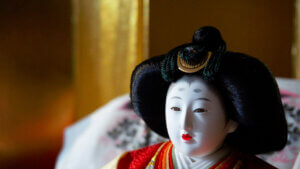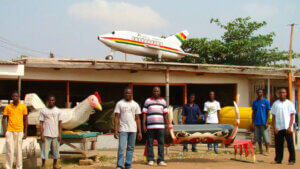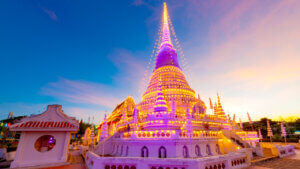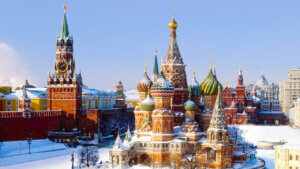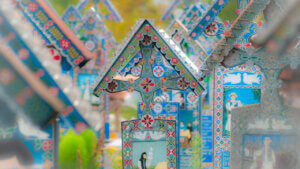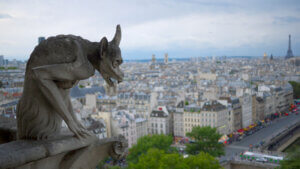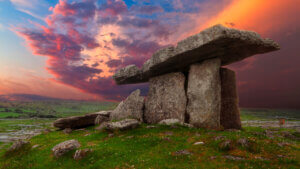Russia
Folk Superstitions & Post-Soviet Funerals
Introduction
Russia is famous for having the largest population of Orthodox Christians in the world! Therefore, Orthodox Christianity directly influences the country’s funeral traditions. However, a lesser known fact about Russia is that it also is the home of many folk death superstitions. Moreover, Russia is home to many religion beyond Christianity. For example, did you know that the only Buddhist Republic in Europe is in Russia?
In short, with this article we address this rich folklore history around witchcraft and death. Finally, we are visiting different parts of this huge country and discuss the effects of Soviet policies on death and modern funerals!
Death Beliefs in Rural Russia
Old Believers
The Pskov northwest region of Russia is home to many villages. Although on paper these villagers identify as Orthodox Christians, they actually practice an even older form of Christianity. Moreover, these Christian beliefs are often combined with folk superstitions and beliefs. Therefore, funerals are often a ritual event for the community.
That is particularly clear among the Old Believers (picture Russian Amish!), and their death perceptions. Specifically, they are individuals that do not follow the religious reformation that took place in Russia during the 17th century. Instead, they strictly follow the practices they already had before this reformation. Furthermore, in the past, many Old Believers fled to Pskov from Moscow facing persecution. Let’s explore some of their older views and superstitions on death!
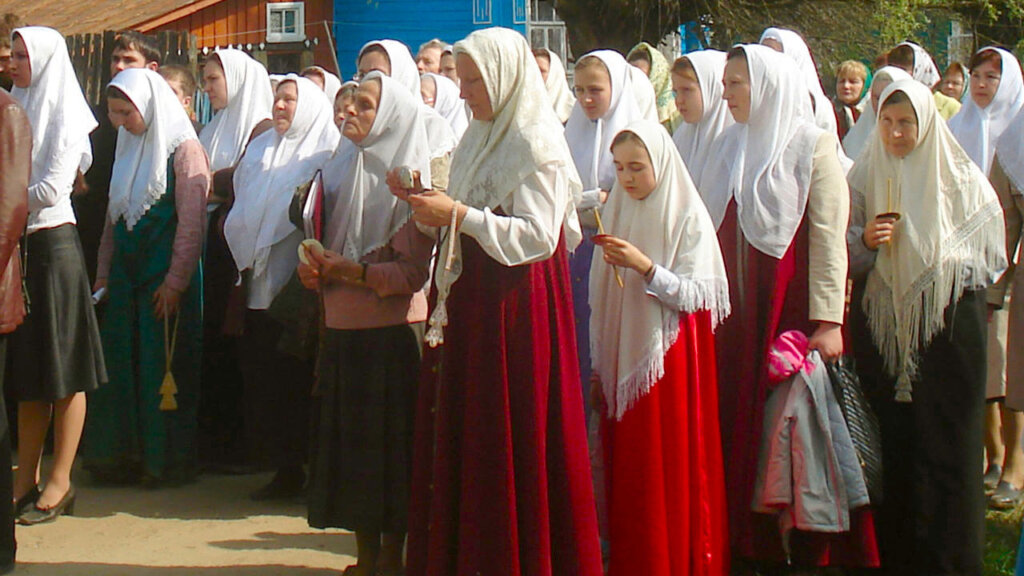
Sleeping and dying
First of all, rural Russians were usually not afraid of the dead. Moreover, they believed that if they were ‘good‘ Christians, they could easily travel to the afterlife. In some cases there were also beliefs that the dead may rise between the wake and forty days after death. According to Old Believers, during this period of forty days, the soul of the deceased remained close to the house of that person.
Additionally, certain folk tales link death to sleeping to an extent. For example, some people in rural Russia thought that when unconscious or asleep, one’s soul may wander to the underworld!
False Death
In addition to the above, intense mourning and funeral keening (vocal lamentation) could potentially disturb the dead. Or alternatively even bring back the dead if the loud mourning took place hours after death. Specifically, Old believers described that as ‘howling back the dead to life’ (razrevit). Moreover, untimely death meant that the soul of the deceased may not move to the afterlife immediately!
19th Century accounts support a widespread fear of ‘false death’, known nowadays as catalepsy. Finally, there were even superstitions of vengeful people coming back from the grave. Specifically, they aimed to punish priests who offered them the last sacraments because they mistakenly thought they were dead.
Folk Superstitions
If you found the above interesting get ready for even wilder folk superstitions and death perceptions!
‘Mertvyak’ – the unclean dead
These are people who died too early due to unnatural causes, and they got stuck in limbo until their time comes. Specifically, some of these unclean dead were people who died due to murders, accidents and suicides. Because of the manner they died, the earth rejected their souls.
The Devil’s Steed
During the 19th century, another word for suicide was chertov kon, meaning the devil’s steed. Specifically, Russian villagers frowned upon people committing suicide, since it was not something real Christians do. Therefore, in some cases they did not even bury them in the cemetery, but in unmarked graves nearby!
Nowdays, views towards suicide are considerably less strict. However, most Russians still believe that a person’s soul is irredeemable after committing suicide.
Sorcery & Evil
In addition to the above, sorcery in Russian Folklore traditions was usually a symbol of evil. A sign of wizardry or serious acts of evil was exhumed corpses that were face down in the coffin. Moreover, a koldun, a wizard in Russian Folklore, was often someone that had sold his soul to the Devil. Therefore, when it was time for him to die, he was suffering for a long time as part of his deal with the Devil.
‘Spoiling’
Wizards or individuals working with the Devil could also cause ‘spoiling’, which is similar to the evil eye of other cultures. The ‘spoiled’ person might end up suffering from mental disorders and even die! There was even a form of hysteria (‘klikushestvo‘), forcing the ‘spoiled’ person to shriek and violently react to the religious symbols.
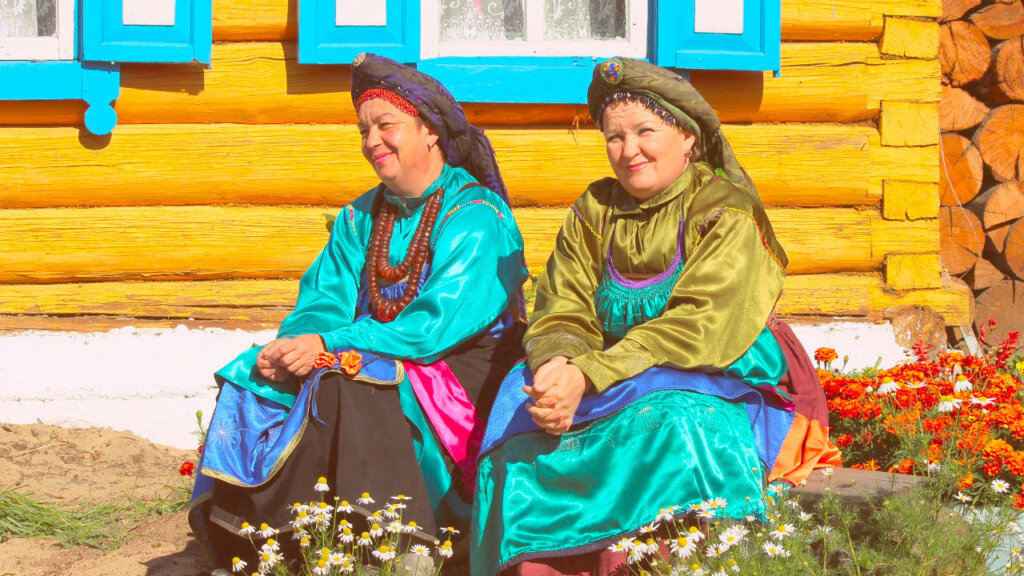
Forest Demons
Forests were crucial for the survival of rural Russians especially in central and Northern Russia, since they provided mushrooms and prey to hunt. Due to that, many people got into the forest but by going astray, never got out of them. Therefore, individuals dying in forests were also unclean dead, since they received no rites or burial. Additionally, forest demons or the souls of other lost deceased, could lead people astray from their path. Finally, it was often the drunkards that the forest demons tricked into going to forests.
Cursed tears
Furthermore, folk traditions said that any funeral handkerchiefs needed to be tossed away, since they contained tears of sadness. If someone came back with their handkerchief they would be, metaphorically and literally, bringing tears into the house!
Clothing of the dead
According to some Russian folk superstitions, the family of the dead had to dress the corpse in white. Additionally, they should let the clothing a bit unfinished, indicating that the garment does not belong in this world! Furthermore, it was of great importance for the deceased to wear a belt since they would need it once resurrected during Judgment Day. After all, belts are something everyone received after their baptism alongside a cross.
Russian Buddhism
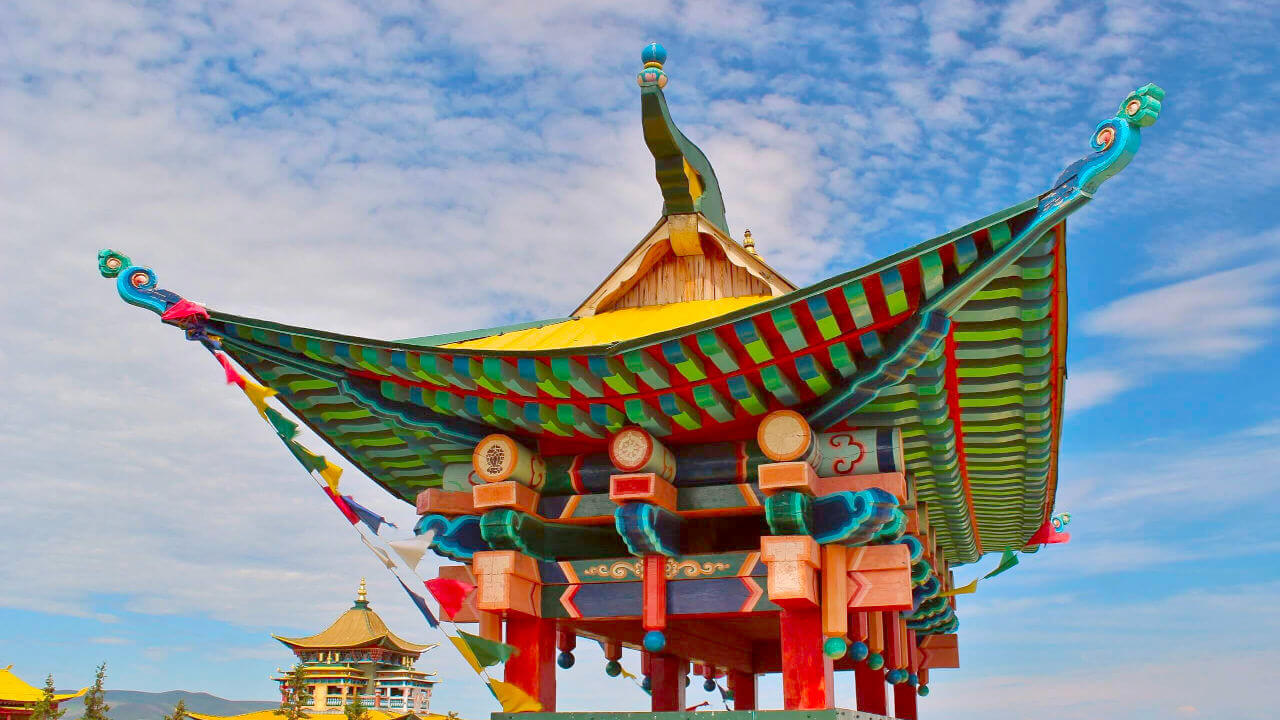
Buddhism reached Russia from Tibet through Mongolia and spread across certain southern republics of the country. For example, the Kalmyks originally of Mongolian descent, live nowadays in the Republic of Kalmykia. Because of their ancestry, Kalmukia is now the only Buddhist Republic in continental Europe!
Russian Buddhism: Ivolginsky Datsan
Moreover, Ivolginsky Datsan, the first monastery of Russian Buddhism, is in the Republic of Buryatia (north of Mongolia). Interestingly, it was built in 1945, during a time of religious persecution in Russia. In 1927, Dashi-Dorzho Itigilov a monk of the
area, announced at the age of 75 that his time had come to an end. Specifically, Itigilov actually died mid-meditation and his fellow monks placed his body in a wooden box, standing upright. Soon after, Russian Buddhism got almost completely wiped out by Soviet forces.
The monastery remains open to this day and is of great significance for Buddhists in Russia. Finally, Buddhists in Russia practice the usual Buddhists funeral rites, focusing on freeing the spirit from earthly possessions.
Religion in Post-Soviet Russia
Around 70% of Russians are Orthodox, while there are about 25 million Muslims and over 1,5 million Buddhists. There is also a smaller Jewish community. Furthermore, Judaism, Orthodox Christianity, Buddhism and Islam are officially traditional religions in Russia. Finally, the Russian Orthodox Church has a higher position and due to that it’s in charge of all religious affairs.
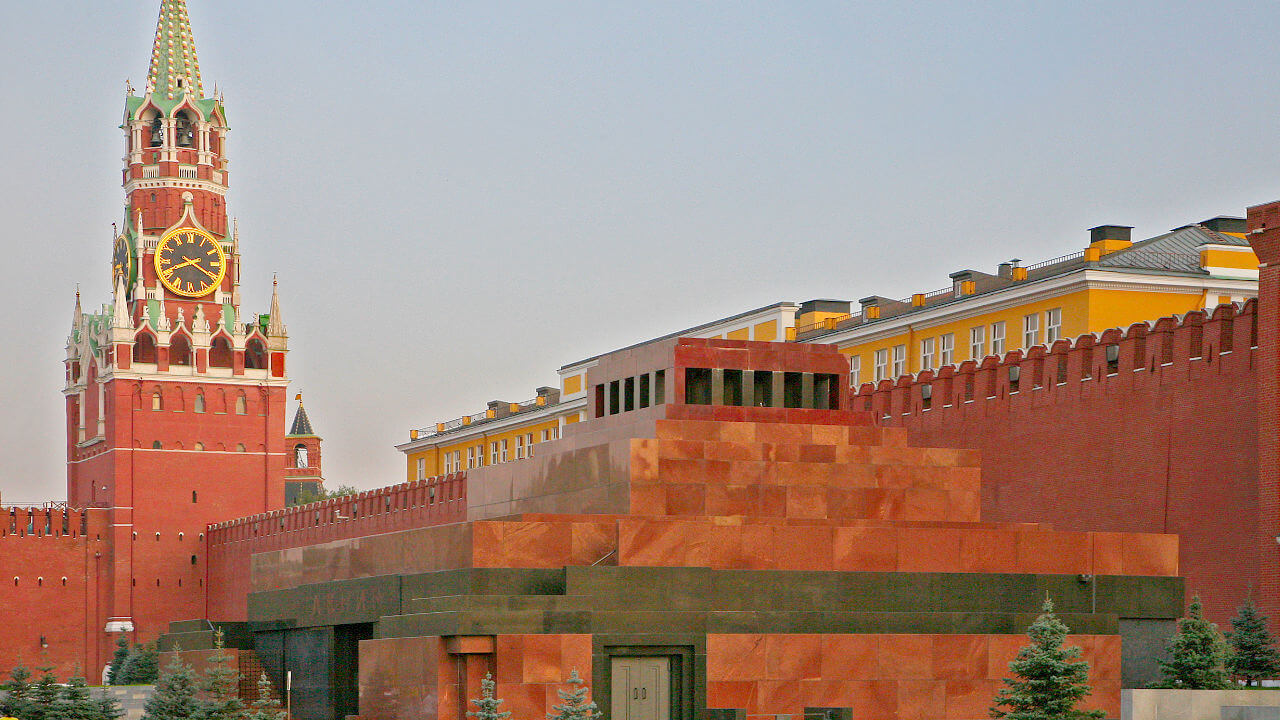
Historically, religion got banned after the execution of the Imperial Romanov family and the following rise of communism in. However, it made a brief return under Stalin during World War II, in an effort to create a patriotic sense among Russians. After the war, the Russian state banned religion again but since the collapse of the Soviet Union, religion started gaining popularity.
However, nowadays only 5% of Russians frequently attend church mass. This is also a sign that religion in Russia is connected more to one’s national identity rather than religiosity itself.
Funerals in Modern Russia
Finally, here is a list of commonplace modern Russian funeral arrangements!
Corpses & Flowers
Firstly, in most cities the family doesn’t keep the body of the dead at home for the funeral, although that still occurs in rural areas. Secondly, burials are the most common practice. However, Cremation is also getting slowly more popular, with Moscow having three crematoria. Moreover, the urn with the ashes is usually kept at columbaria in the cemetery.
Floral arrangements in contemporary Russian funerals steam from soviet military traditions. Therefore, many arrangements consist of artificial flowers and conifers sprayed with contrasting colors.
Marking the grave
Also, a wooden cross and a metal plate, with an inscription of the name of the dead are common funeral items. Additionally after the burial, relatives place those on the grave. These items also indicate the burial spot since the tombstone could be placed even up to a year later. This delay is often a result of the harsh Russian weather, and it is a technique to avoid ground subsidence. It is also common to install wrought iron fences around the cemetery plot in order to mark the grave properly.
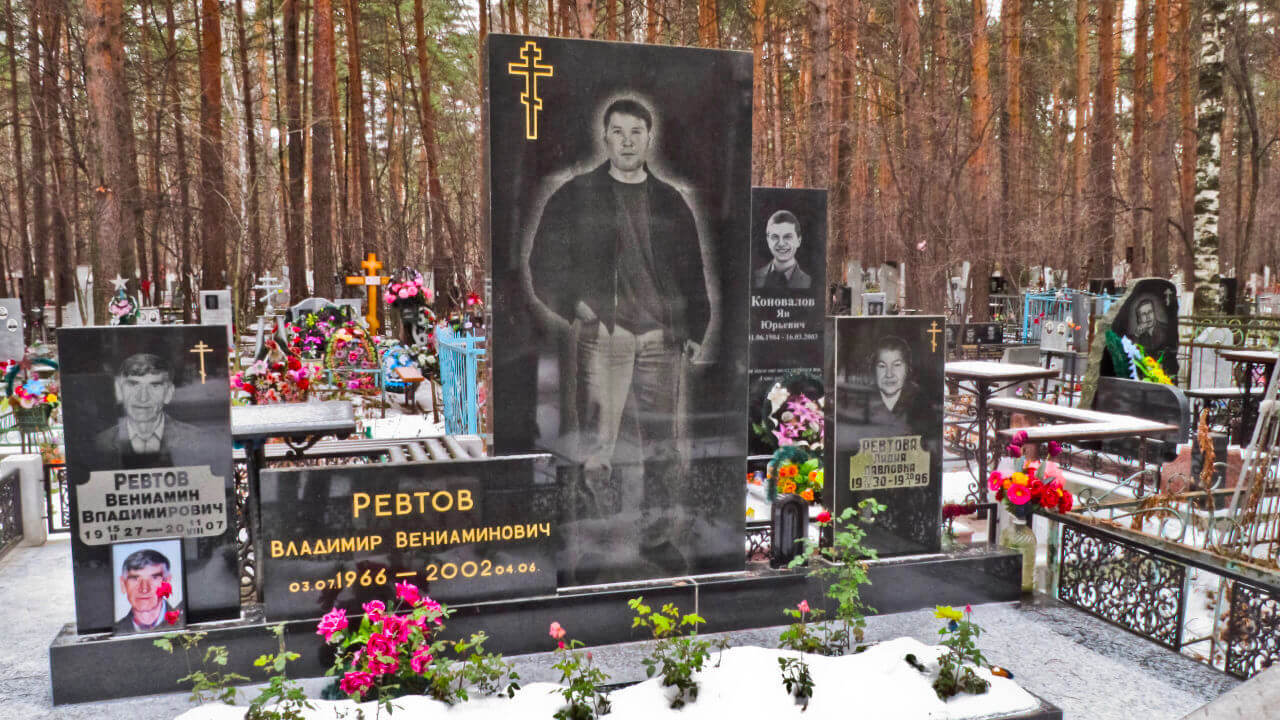
Jewish Funerals
Finally, in case the deceased was a follower of Judaism, Jewish elements are also present at the funeral. For instance, there are certain Jewish prayers for the deceased either in Russian or Hebrew. These include the ‘El Maleh Rachamim’ and the ‘Mourner’s Kaddish’.
Read more
We hope you learned something new regarding this country’s death practices!
If you want read more on other death superstitions we recommend our, lighter, France article on Food Superstitions. If you would like to read more on Buddhist burials we direct you to our article on Tibetan Buddhism and the related Celestial burials. Finally, for more on socialist funerals check out our article on Cuba.
Stats & Facts
The Russian average mixed death rate is 12,14 per 1.000 (2018).
The Russian laws tend to be quite flexible when it comes to funerals. There are no specific restrictions in terms of the time of the funeral after someone’s death.
Russia has the largest Christian Orthodox population in the world! Moreover, 10% of Russians are Muslim but Judaism and Buddhism are also present in Russia. Finally, there has been also an effort to revive older ethnic religions including Slavic paganism.
The rate of utilized donated organs is 3,84 per million population (2017).
Life Expectancy
- About modern funerals in Russia
- Buddhism in Russia
- Check out Russia’s Kalmykia: The only region in Europe where Buddhism rules the roost – Nikolay Shevchenko (2018)
- Crude Death Rate / Russia – World Bank
- Death around the world: Russian funeral traditions (2017)
- Ivolginsky Datsan
- House of Romanov
- Lenin’s Mausoleum
- Religion in Russia
- Religion in Russia – Maia Nikitina (2019)
- Russian Funeral Traditions
- Russian Funerals: Traditions, Customs & What to Expect – Sam Tetrault (2020)
- Russia – International Registry In Organ Donation And Transplantation
- Warren, E. A. (2000). Russian peasant beliefs and practices concerning death and the supernatural collected in Novosokol’niki region, Pskov Province, Russia, 1995. Part I: The restless dead, wizards and spirit beings. Folklore, 111, 67-90.
- Warner, E. A. (2000). Russian peasant beliefs and practices concerning death and the supernatural collected in Novosokol’niki Region, Pskov Province, Russia, 1995. Part II: Death in natural circumstances. Folklore, 111(2), 255-281.
- Lelia Adolphsen, Free Use, via Pixyorg
- Public Domain, Free Use, via Pixyorg
- I, CC BY-SA 3.0, via Wikimedia Commons
- Аркадий Зарубин, CC BY-SA 3.0, via Wikimedia Commons
- Dmitry Vlasov, CC BY-SA 3.0, via Imaggeo.egu.eu
- Vadim Tolbatov, CC BY-SA 4.0, via Wikimedia Commons
- Аркадий Зарубин, CC BY-SA 3.0, via Wikimedia Commons
- W. Bulach, CC BY-SA 4.0, via Wikimedia Commons
- Peretz Partensky, CC BY-SA 2.0, via Flickr
- Alexey Komarov, CC BY 3.0, via Wikimedia Commons
- xusenru, Pixabay License/Free Use, via Pixabay
- Valerii Tkachenko, CC BY 2.0, via Wikimedia Commons

